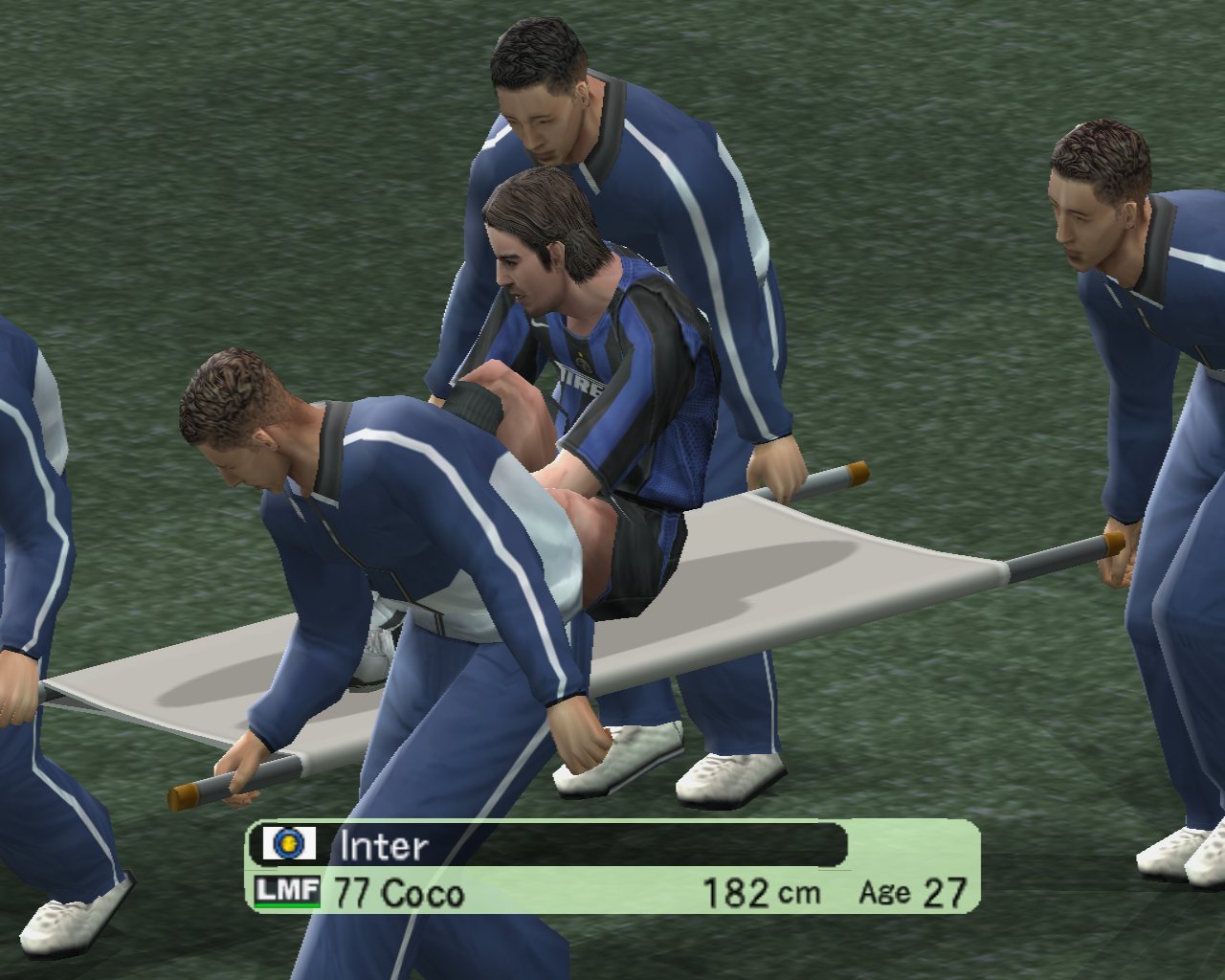
Pro Evolution Soccer 4
Written by: Rik
Date posted: May 26, 2010
- Genre: Sport
- Developed by: Konami
- Published by: Konami
- Year released: 2004
- Our score: 9
Even if I continue to play games on a fairly regular basis from now until I get put into a home – and I seriously hope that’s the case (the gaming bit, not the being put into a home part, although by that stage I probably won’t know what’s going on and there’ll be nothing I can do about it anyway) – I doubt that any individual game or series of games will be able to eclipse Pro Evolution Soccer in terms of the sheer amount of time invested (or wasted, depending on your point of view).
Starting with the old ISS Pro Evolution games on the original PlayStation, my addiction began at university, where – as you might know if you too studied an arts-based course – you get plenty of free time to indulge in extra-curricular activities that have absolutely no value to your future life or career. As the series progressed onto the next generation of consoles, I broke the habit of a lifetime and made sure I had one, and a copy of the latest version of the game whenever it was released. By now a fairly unhealthy multi-player rivalry had developed with a good friend/sworn enemy, and at the peak of our habit we were subjecting ourselves to at least five matches a night, with the echo of defeat ruining any chances of a good night’s sleep, as well as casting a shadow over the following day at work, for the loser. It was so serious I even lost my appetite for casual midweek drinking, lest a couple of beers should cause a fatal drop in reaction time.
But then we’ve kind of been through all of this before. Even by the fairly ropey criteria we have for inclusion on this site, simply having spent a large amount of time playing a particular game doesn’t necessarily cut the mustard, particularly if – and this is pretty common when it comes to sports games – a once-enjoyable title has since been made to look rather silly and outdated by more recent releases. In fact, I’m pretty sure that I once boldly declared that when it came to looking for a decent football game, you may as well just buy the latest in the Pro Evolution series and be done with it.
Unfortunately, though, at the time of writing, said series isn’t in the rudest of health, and if you were to acquire a copy of the latest version, you might very well ask yourself what the hell happened. By popular consent, something’s gone a bit wrong in recent years, and although critics have been quick to push the claims of the latest FIFA games on current-gen consoles, many remain unconvinced – and if you’re a PC gamer, you’re fucked anyway, because EA can’t be bothered to port the game over and the best you get is a lazy knock-off based on the Playstation 2 version of FIFA, which regularly – and deservedly – came a distant second to Konami’s efforts back in the day.
Whatever happens in the future, the current blip or decline for the series does seem to represent a chance to look at what made it so great back when it was the undisputed king. Even if it does get back on track, it’s unlikely that I’ll ever be able to pump quite the same number of hours in, or enjoy extended multi-player sessions in the way that I used to. So Pro Evolution Soccer from a few years ago is probably the way that I’ll always remember the series. And, as I mentioned, it’s probably the most significant game in my personal gaming history, and seeing as this is my 100th review for the site (I promise I won’t mention that again) it seems like a fitting way to mark the milestone. Plus I waded through this first, so I feel like I’ve earned it.
The title of the review says Pro Evolution Soccer 4, so it will be Pro Evolution Soccer 4 that we cover here, and rest assured that I’ve spent many hours getting reacquainted with this particular version. As for the main reason for choosing this one from the series, the decision was based largely upon a loose recollection of the proportion of play-time I’d historically spent experiencing both single and multiplayer modes. The earliest incarnation released on the PC, PES 3 (2003) was mainly a single-player affair for me, while versions subsequent to this one, PES 5 and PES 6 (2005 and 2006 respectively) were mainly digested in furious bouts of multiplayer action. Overall, I’d probably had the most balanced experience of number 4, which explains the choice. That, and the fact that this was the one the second-hand shop had on the shelf.
While we’re talking about different versions, though, I’m not going to get into a debate about which version is definitively ‘the best’. They all have their admirers, and while a moderate level of internet research would seem to suggest a vocal majority favour PES 5, others complain about it being unnecessarily fiddly and unresponsive. I can see both points of view, although my own reasons for avoiding that one centre more around avoiding reminders of an unnecessarily intense period of multi-player conflict. If I had to pick, I guess I’d favour the latest to be developed specifically for the last generation of consoles, PES 6, but ultimately, although there are a multitude of subtleties and differences between each version that become apparent the more you play and compare them, you’d have to say it’d be stretching it a bit to argue that they’re fundamentally different games. Hence, while it’s definitely number 4 we’re talking about, it’s worth bearing in mind that many of my remarks will obviously apply to the series (especially PES 3 – PES 6) in general.
So, Pro Evolution Soccer then [Finally! – FFG reader]. It’s a football game, obviously, but seeing as there have been roughly seven million of those released over the years, what makes it so special? Well, for a start, it actually feels like football. No doubt such a thing has been said for every previous generation’s champion of the genre, but frankly, they were all wrong. Until Pro Evo, I’d contend that no football game actually managed to capture many of the base elements of the game to any great degree of satisfaction.
I’m talking simple things here – as basic a concept as being able to retain possession by passing the ball about in your own half, for example, was largely absent from football games until the early part of the new millennium. In the late nineties, the gaming press championed the likes of Actua Soccer 2, a ridiculously fast ping-pong affair with little subtlety in which every goal came from a shot from outside the box. Its rival, FIFA ’98, showed more promise in offering a slightly more measured approach, but just as EA looked as if they were getting it right for once, they gave us FIFAs ’99 and 2000, daft arcade-y affairs in which mastery of sidesteps and pirouettes were necessary simply to hold onto the ball.
In real football, though, passing the ball about and not giving it away is a) relatively common and b) quite a good idea. And so it is with Pro Evolution Soccer. You can’t just lump it up to your star striker and let him bulldoze his way through the defence, you have to move the ball about and work an opening. Beating a man with a burst of pace, or a special trick, is quite an exciting part of football, but the reason it’s exciting is that it doesn’t happen all the time – so yes, you can do that in Pro Evo, but only with particularly skilful players, and only under the right circumstances (more on which later).
Equally, goals are something to be earned and cherished, not simply a matter of holding down a button and watching the ball sail into the top corner. Contrary to what Sky Sports adverts would have you believe, games of football are not usually epic, pulsating encounters that keep you on the edge of your seat throughout. For the most part, they’re extremely dull spectacles, and when the ball hits the back of the net, it’s celebrated as a moment of rare excitement that stands out in contrast to the other 89 minutes or so when not all that much is happening. A screamer from 40 yards is possible, but also rare. Most of the time, when a player tries to shoot from miles away or from an impossible angle, the ball doesn’t go in the net.
To keep on the (some might say subjective) theme of how the game ‘feels right’, much of it is down to the ball physics, which are absolutely spot on. Whether it’s rolling on the ground, soaring through the air or deflecting away after a midfield melee, the ball behaves as you’d expect a real football, in a real football match, to behave. It’s in fundamental areas such as this in which Pro Evolution Soccer succeeds where so many others have failed.
There’s more, though, of course. The players at your disposal have a great bearing on how you’ll play and what you’ll be able to do. At the simplest level, this is realising that you shouldn’t attempt a jinking run with your big lump of a central defender, or that your tiny striker is pacy and good on the ball but he’s not going to win too many headers. But beyond that, you actually do need to pay attention to your line-up and what your individual players’ strengths and weaknesses are before you can start stringing results together, either against the AI or against a human opponent.
In fact, developing an understanding of your squad is virtually essential in order to get the most out of your team. So you move beyond the obvious observations and you start realising more subtle things: for example, a centre-forward might not have the best all-round stats, but if you only play with one striker, he’s better suited to the job than anyone else. Or you might weigh up the strengths and weaknesses of two wide midfielders; one might be more technically accomplished and have better passing and crossing stats, but he doesn’t have the pace of the other to get past defenders and into more advanced positions – who do you pick?
You also have to consider how to get the most out of the one or two standout players you might have at your disposal. Deployed correctly, your star midfielder can run the game for you, and though there’s little chance of him single-handedly pirouetting past the entire opposition defence to win the game on his own, there is a certain satisfaction in knowing that, if you’re in need of a goal late on, you can give the ball to him and he might be able to create something special. On the other hand, if he doesn’t fit into the formation that fits the rest of your team, you run the risk of wasting his talents by playing him out of position.
While the initial focus may be on your star players, after a while you begin to get to know even the less well-known members of your squad. In fact, if you spend the requisite amount of time playing with the same team, you begin to develop genuine affection for your players, to the extent that you start to superimpose personalities onto certain members of your squad, perhaps even imagining yourself as their manager and delivering words of encouragement to your favourites, while castigating others for even the slightest mistake. To do so may be a deluded fantasy, but when you’ve spent several hundred hours rotating the same squad in search of a winning combination, you believe every second of it (see Five Villians and Five Heroes).
In terms of recreating the ‘beautiful game’ then, Pro Evolution Soccer delivers. But surely even the best football games have a limited shelf life, especially in single-player? It’s true that this is a game best enjoyed when you have a worthy human opponent who’s willing to give up much of his or her free time to play it with you, but in terms of single-player options, there’s plenty to keep you interested. Aside from the normal single-match, league and cup options, Pro Evo’s trump card is the master league, an ongoing season mode where your performance on the pitch earns you points to spend on new players. You can either choose to start with a generic bunch of no-hopers or the existing squad for a particular team, in the hope of working your way to the top of the Master League and staying there. Frankly, you can devote hours of your life to this thing, and with players ageing and retiring as time passes (a new feature for Pro Evo 4, in fact) it’s an ongoing challenge rather than one that just gets easier and easier.
Still, while the single-player mode could in no way be described as easy (well, except if you choose the easiest skill setting – crank it up to the top level from the start, it’ll make you learn more quickly), there’s no doubting that your AI opponents pose a very particular kind of challenge. Their tactics pretty much consist of keeping things tight and aiming to nick the occasional goal rather than trying to take you apart, and you’ll find that the major obstacle to winning a league trophy is the steady stream of 0-0 draws that’ll come your way if you can’t break your opponents down. It’d be nice (not to mention more realistic) if other teams were able to show slightly more ambition and produce the occasional high-scoring thriller – or at least give you a bit of a thrashing every so often.
And while we’re being generally complain-y, it’s probably worth mentioning some of the other things Pro Evolution Soccer doesn’t do so well. For a start, it lacks in the presentation stakes. While the raggedy menus and absence of licensed music don’t particularly bother me personally, it’s an area where Pro Evo lags behind even the FIFA games of the late ’90s. Of more concern is Konami’s lack of licensing muscle, especially to fans of English football, who in this particular version will have to endure the fact that none of the Premiership teams are licensed and are therefore known by ridiculous pseudonyms such as ‘Merseyside Red’ and ‘West London Blue’ (that’s Liverpool and Chelsea to you or I).
Of course, you can edit the team names, but they’ll still play in embarrassingly simple versions of their official kit, which only serve to hammer home a general paucity of visual polish within the in-game graphics. With licensed teams from other leagues (Dutch, Spanish and Italian leagues are all present and correct) things look much better, but even the most die-hard of fans would have to admit that the player models are a little chunky and the colour palette is rather faded and dull-looking. Sound-wise, the crowd noise seems slightly removed from the action itself, while the commentary ranges from the acceptable to the laughably bad: we’ve mentioned ‘expert summariser’ Trevor Brooking’s ridiculous utterances before (“He dummied the ‘keeper great there”) but the latest play through of this one reminded me that commentator Peter Brackley uses the snigger-worthy phrase “They’re going at it, hammer and tongs!” at least twice per match.
And, as slick as the gameplay is, it’s not perfect either. Aside from the quibble with the AI defending their goal rather than trying to beat you, set pieces are something else that the series never seemed to master, with free kicks in particular offering little in the way of genuine goal threat, and you soon find yourself just passing to the nearest player instead of lining up a shot. As for this particular version, there are a couple of differences from future games which could come down to personal preference – pinging a few passes about seems to require less precision than you might want or expect and it’s rather easier to get away with lazy ball control, for example – but there are others which you’d have to count as flaws. Firstly, while there’s nothing that you could call a ‘score every time’ tactic to exploit in the game, it has to be said that low crosses and cutbacks seem to have a more than decent success rate. Secondly, there are very rare occasions when you can be awarded a ridiculous number of penalties (up to four in the same game), which the game then balances out by making sure you miss them.
Still, such things are irritating only because they jar with the otherwise extremely realistic and enjoyable representation of football that the game provides. Crucially, it takes hours and hours and hours of play before anything even approaching a critical thought creeps into your brain, and even once it arrives, it’s not going to stop you playing. Even though I’d already thought I’d played Pro Evolution Soccer 4 to death, and even though I had the newer titles at close hand, at no point during the past few weeks did I think that the game was lacking, or that it suffered by comparison to its sequels. Frankly, I was too busy trying to guide Parma to the Serie A title to care.
All of which means, of course, that Pro Evolution Soccer 4 remains an awesome game. If you have even a passing interest in football, or sports games in general, and there’s any chance that you’ve never experienced this series, I implore you to rectify the situation immediately. If you’re really not interested in such things, I guess I can’t promise that it’ll change your mind. But I have met a fair few people who don’t care for the real thing but will still happily reminisce about their favoured team and players from Pro Evo. So perhaps it’s a love that can be shared universally among all gamers, across nations and across all the people of the world! If everyone played it, we’d have world peace [Except that it’s actually the kind of game that can cause you to fall out with dear friends – someone who’s played Pro Evo].
Oh yeah, forgot about that. While we’re on the subject, why don’t you check out our feature – How to be a complete bastard?

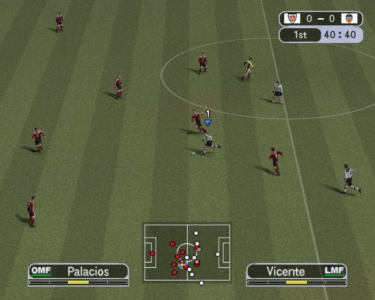
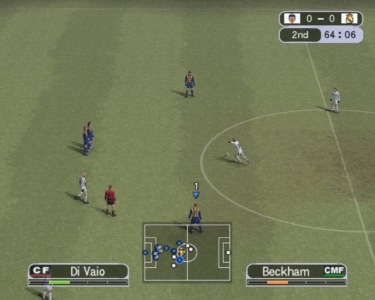
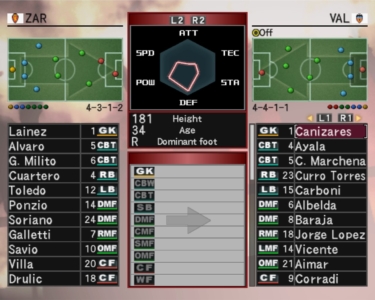
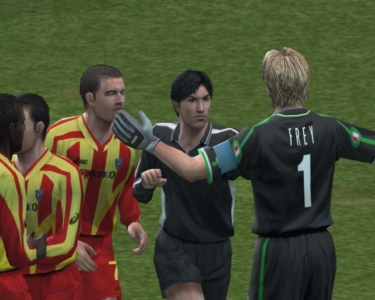
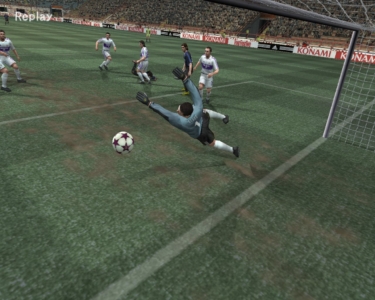
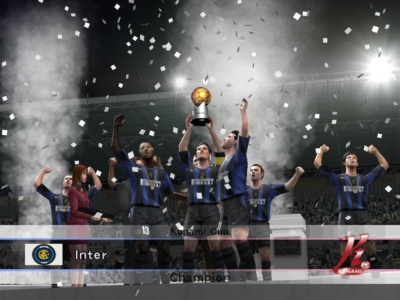

 Posts
Posts